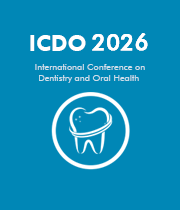Title: The accuracy of oral and maxillofacial surgeons at locating maxillary ectopic canines
Abstract:
Background: To locate the position of an ectopic maxillary canine for surgical exposure the operator uses a parallax technique and applies the SLOB rule. Accuracy of this technique can depend on many variables including clinician experience and training. Incorrect location of these canines can result to the patient being exposed to increased operating time, incorrect flaps being raised, and operator stress. However, CBCT 3-D imaging could assist on selected cases benefiting the patient and clinician despite an increase to radiation exposure.
Objective: To assess the accuracy of surgeons working in a maxillofacial department at accurately predicting the location of ectopic maxillary canines on assessment.
Methods: Data was collected from patients who had a maxillary canine surgically exposed between September 2020 to August 2021. The data was collected from 61 patients which included 71 maxillary canines. All surgeons in the department are experienced at identifying ectopic canines and performing surgical exposures. Data was collected from the patients medical notes before analysis.
Results: Correct location of the maxillary canines position at assessment was 45/71 (63.38%). However, 8 patients had a CBCT which helped assist the location. Position and tooth varied results; the upper right canine position was correctly located at 65.85% compared to 60% for upper left. However, a palatal positioned upper left canine gave the most accurate score 82.35% whilst positioned buccally it was least likely at 25%.
Conclusion: Using 2-D parallax and SLOB rule to identify the position of ectopic maxillary canines has some inaccuracies. Clinicians should consider using CBCT to assist when locating ectopic maxillary canines for surgical exposure. Position and side of tooth in the maxilla appears to effect accuracy of clinicians with buccally positioned upper left canines being the most difficult to locate using 2-D imaging alone.




